Internship Lessons in the Agumbe Rainforests
When Priyanka, Program manager at KCRE, and I spoke a promise was made regarding Aarshia’s internship with KCRE in the Agumbe rainforests.
“To let Aarshia explore the forests on her own.” Yet, a parent was to accompany her to Agumbe, as she just turned sixteen.
It was also a great opportunity for me, to be part of this learning based adventure. I ended up grabbing it with both my arms. Agumbe has been on my “forests to explore” list for a while now, and what better opportunity to experience these rainforests, than this.
Kalinga foundation is dedicated to promoting ecological research and actively works towards the conservation of wildlife, that include reptiles and amphibians, including King Cobras and Malabar Pit Vipers etc., in the Central Western Ghats; as you read in Part I of this post.
Agumbe rainforests with its flourishing biodiversity of mammals, amphibians, birds, butterflies, insects and reptiles is every nature lovers haven.
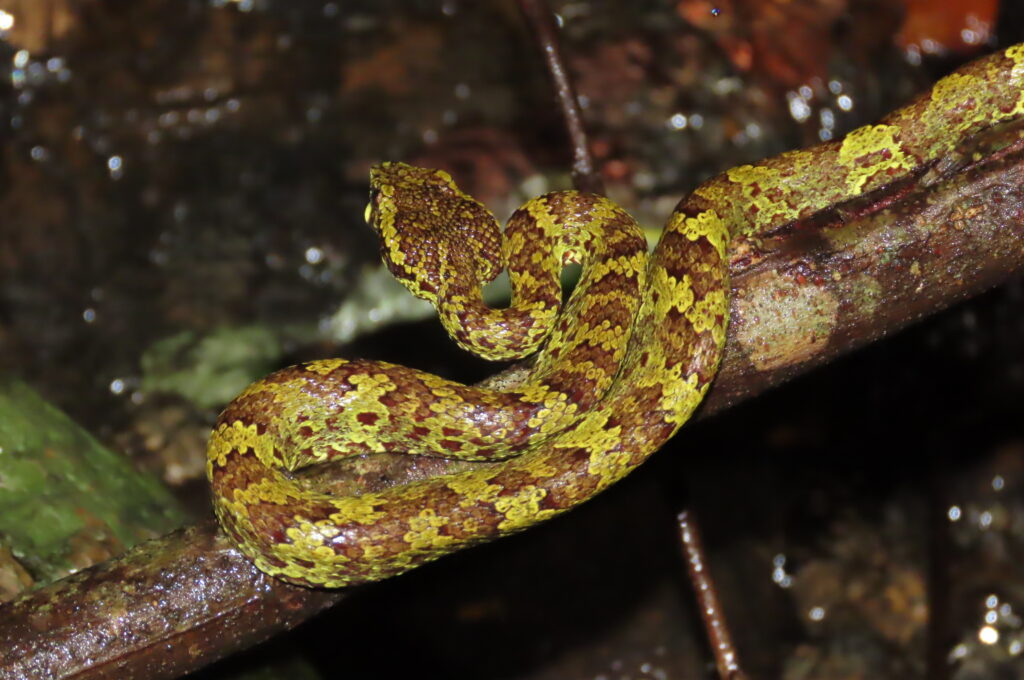
Behind Fear there is a Mammoth Wall of Courage : Night time Adventures
Exploring the dense Agumbe rainforests was an adventure we had been waiting for with bated breath.
I thrive on night-time forests walks and herps(searching for reptiles and amphibians) that take us into the meandering depths of the mysterious jungles. Yet, I must admit I was a wee-bit nervous as we began our walk, on our first night trail.
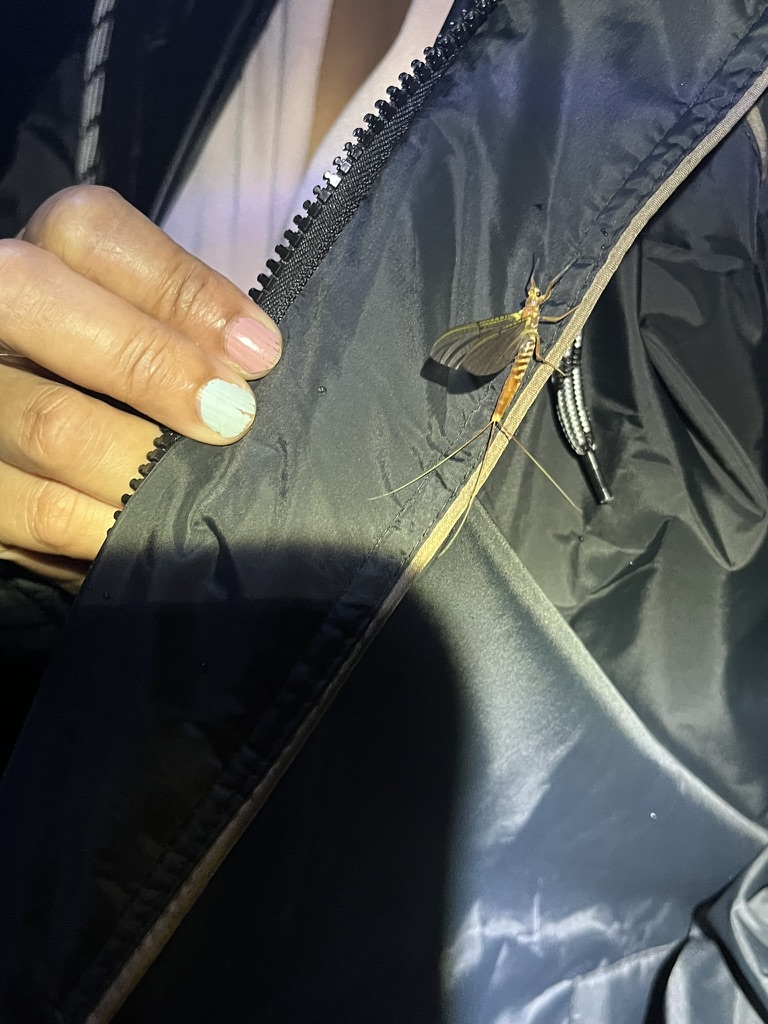
We trudged through the rocky stream armed in our gum boots, rain gear and leech socks, while it continued to pour incessantly. Each time a branch or foliage brushed against me, I’d look around warily, and think mildly obtrusively, “What if a critter gets the better of me.”
Fortunately the “brave voice” hushed that thought: “It takes courage to answer a call, while experiencing a jungle, and you have the gall to do it all.”
I was accompanied by two teenagers (Aarshia, my 16 year-old and Kavya, another intern), treading the forest inquisitively, with chinks in their armour and brave writ on their faces. The rain pitter-pattered upon us and the the not-so-sleepy forest denizens; as we keenly explored the landscape with our flashlights.
We were accompanied by researcher and naturalist, Akshay Kondacha from KCRE, who deftly guided us through the bustling landscape of a stream and rocky rainforest.
For the Love for Snakes and Amphibians
A lot of people have asked me after reading these posts, “How do you guys go so up close and personal with snakes and “creepy crawlies”. Firstly let’s refrain from calling them that please.
Now to my response which usually is, “Oh! I love them.”
People retort back, “How can you?” “Why do you need to do this even?“
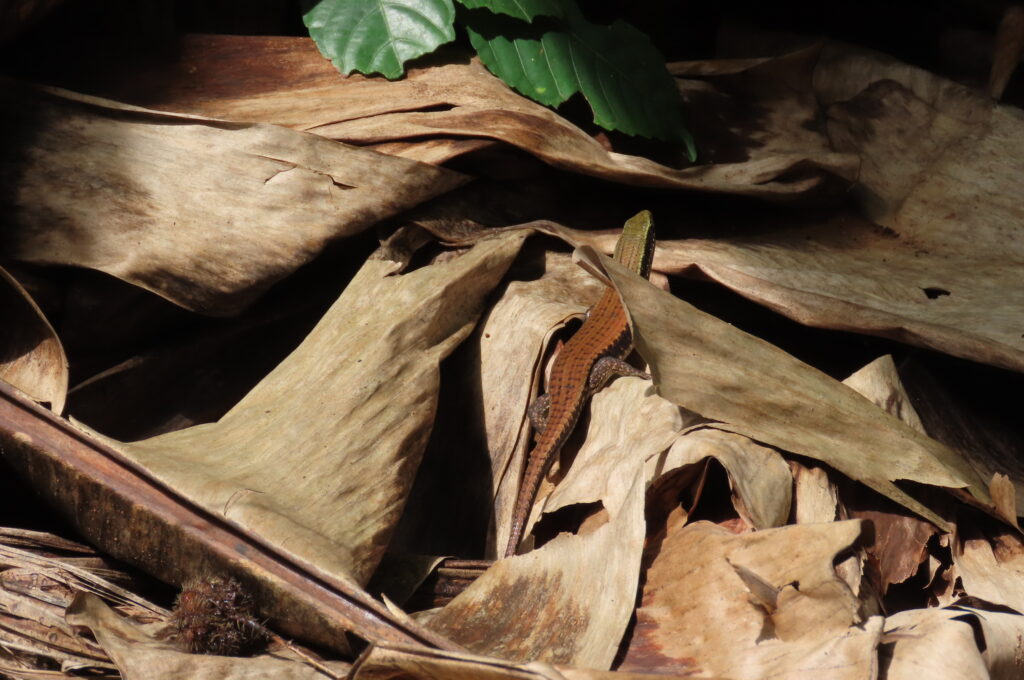
My intention is not to sound too pedantic, but In our scheme of things we see them as marvellous beings that we are blessed to share space with, on this planet. Moreover, all beings are as integral to the ecosystem as we are.
Aren’t they?
The Wall of Courage
“Behind fear, there is a mammoth wall of courage waiting for us to fallback on.” So, I believe.
Animals and plants respond to the emotions we give out to them. It’s all energy. You display fear and they pick on your fears and respond by biting, chasing, or attacking you. Essentially a fight, or flight response.
I have grown to love reptiles. Would have been intimidated by them till about 7 years ago, despite many encounters with venomous snakes and monitor lizards right inside and outside our home, during my growing up years. (that is defintely another tale for yonder). I guess we were all were fed on far too many stories and films about snakes being slithery, revengeful beings.
Working in wildlife has brought me closer to nature, in more ways than I could have ever imagined. Growing up, the natural world fascinated me beyond measure. Moreover, since I have written and worked for wildlife for the last 7 years, it has become an integral part of my being.
Children and Wildlife
Aarshia has always loved reptiles. I feel she was also in many ways responsible for initiating me into the process. The journey has become more expansive now, as I practise Interspecies communication. My older child also loves snakes, by the way.
I believe if we honour nature and face our fears; we also empower our children to do the same. They in turn learn to value our planet, and be responsible for its well-being. In the process we also raise individuals who are equipped to deal better with tough situations, in general as well.
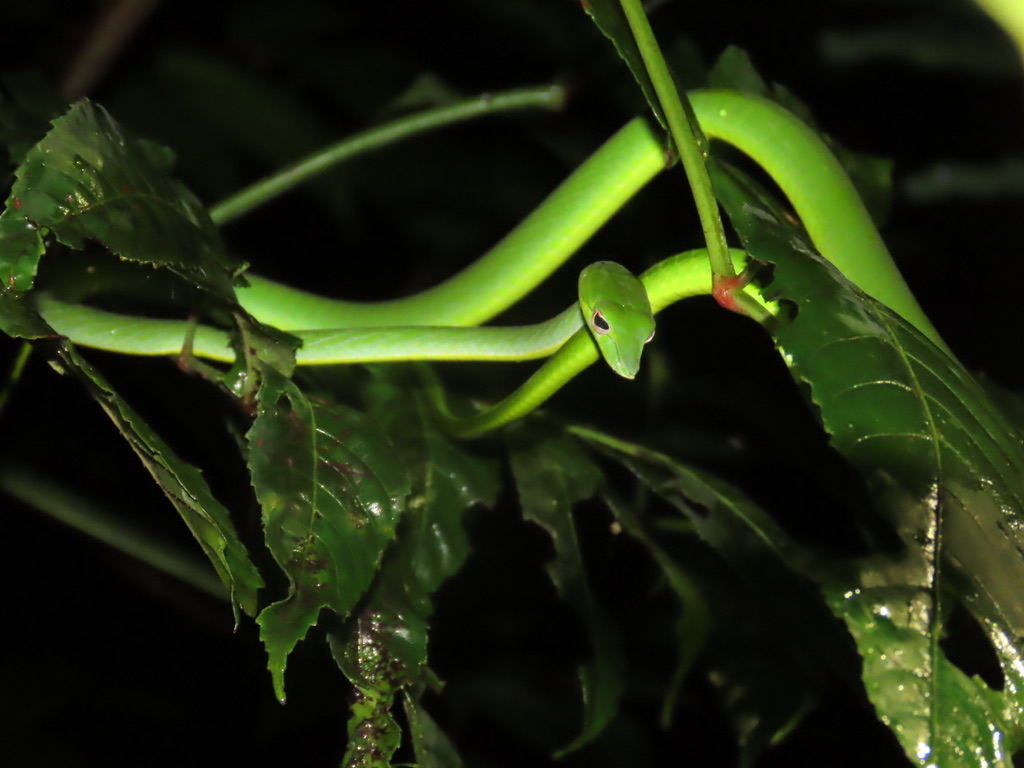
Humans are just a tiny speck, in the larger scheme of things. There are billions of other beings that inhabit Mother Earth. We never owned this blue planet. Though we do owe a lot back to her.
Learning Adventures in Nature’s Classroom with KCRE
Interning at Kalinga foundation is all about learning in a boot camp kind of class room scenario. When young people, students, researchers, or low budget travellers visit, they stay in tents in a plantation, right next to the depths of a stream, in the Agumbe rainforests.
They get to experience the thriving forest that comes alive every hour of the day in a unique way, up-close and personal. KCRE also has charming, quaint wooden-stilt cottages for guests and other people who would like to enjoy the forest in the comforts of a cosy room.
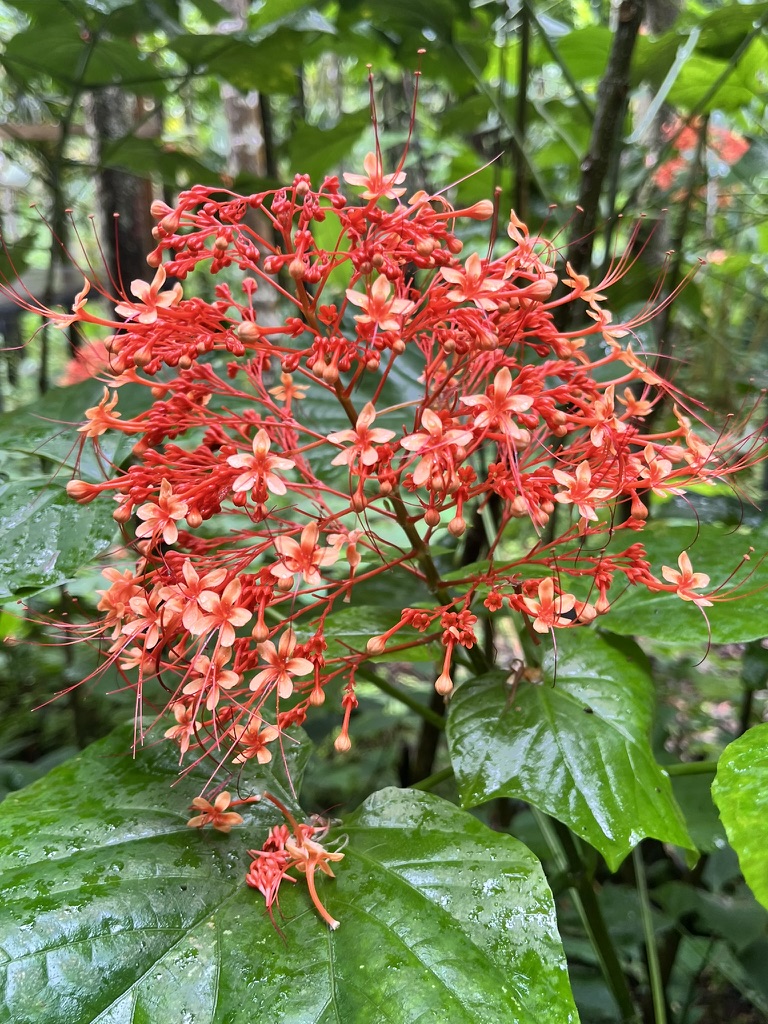
Internship with Kalinga Foundation
The choice of internship at KCRE comes with options that include 7-15 days, to a month and more. Interns are encouraged to stay longer (at least a month) to understand and study the landscape better.
Dr. Gowri Shankar founding Director, KCRE explains why, “Your eyes start getting trained to the landscape, and tuned to identifying different species only after a few days of your arrival; and if it’s time to leave, then the learning tends to be limited.”
Aarshia therefore, hopes to go back for a longer stint than the 8 days we spent this time.
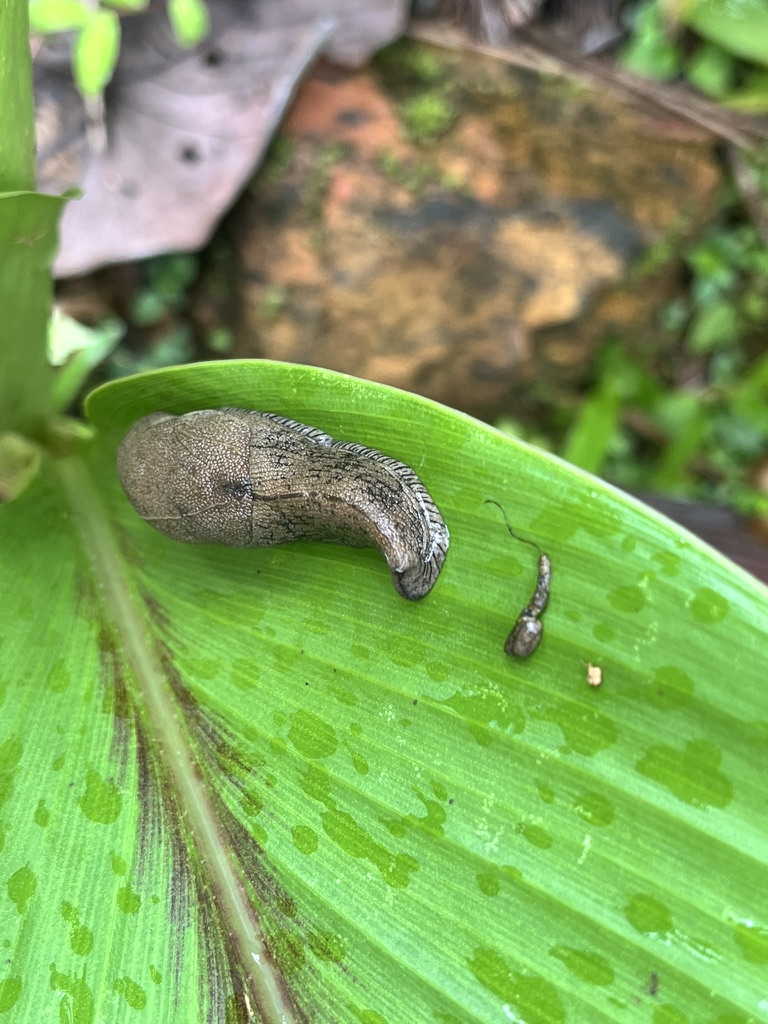
The interns are assigned different projects depending on their interests; or what the coordinators would like to see them do.
Aarshia and Navya were the two interns who were allotted the study of Amphibians and Snakes respectively, by Priyanka, the astute Program Manager at KCRE. The day we were leaving another intern joined to study the myriad trees of Agumbe.
The Internship Drill with the Thrill
The fun drill includes going for two hour morning and night surveys, exploring the different parts of the forests of Thirthahalli, where KCRE is located. The timings usually are 11 AM to 1 PM and 9 P.M. to 10:30/11 P.M.
While carrying out the survey, it is absolutely pertinent to be vigilant and alert, so as not to disturb the species. One is given all these guidelines, including maintaining a safe distance from all the species. Sticking to the survey timings is necessary as well. Even though you may decide to linger on longer especially during the day, what you saw during the survey timings is only to be recorded.
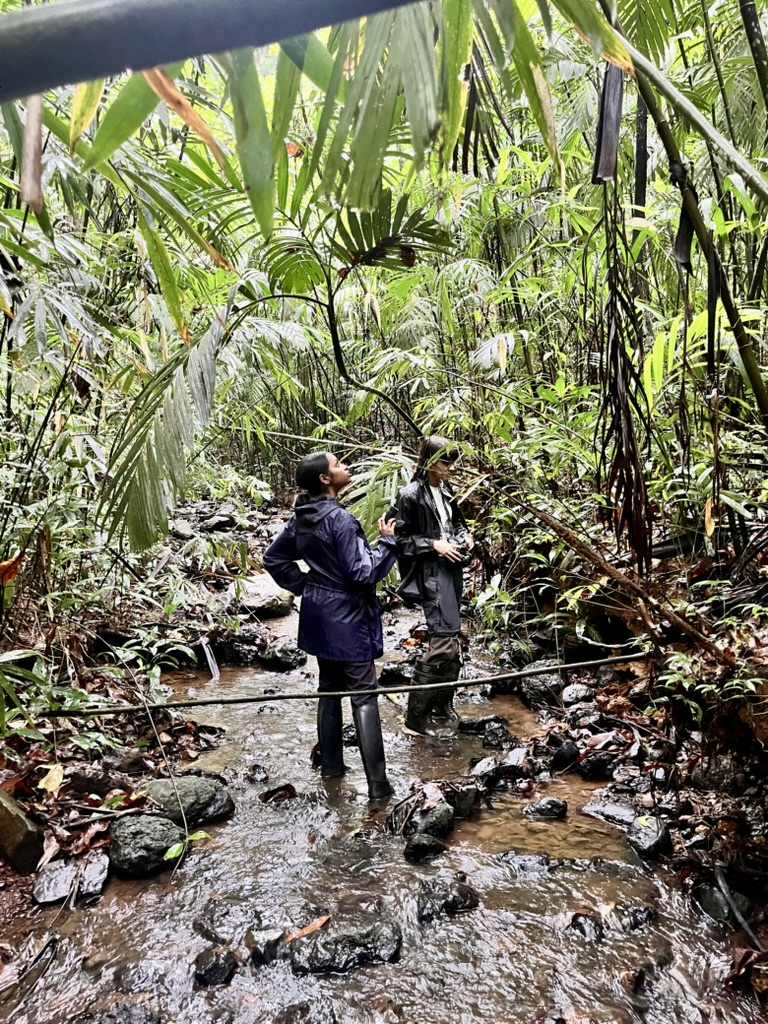
Gearing up for the Adventures
Post dinner, the forest armour is donned. Headlights/torch lights, rain coat, rain pants, leech socks, gum boots, and not to forget the cameras and their protective gear. I was more than glad to be using my iPhone as and when I pleased. That way I could be present in moment, than the photographing process. Though I did use a macro lens sometimes. We were trying our hand on Macro photography for the first time. Shout-out to Ashir Kumar for the Inspiration!

While at Kalinga Mane
Guests who visit KCRE get a hands-on experience on what forest living entails. They are served a delicious spread of local meals, while the interns help lay the meals. They sometimes even pitch in the cooking process, if the cook happens to be on leave. The guests are asked to wash their cutlery and utensils after every meal.
The interns at KCRE learn to interact with guests, look after the property, while taking onus for the space and the forests at large. They are also given the responsibility of taking the guests for the herping walks (herping – searching for and observing amphibians and reptiles in the wild) around the propert and the adjoining Agumbe rainforests. Of course, once they have acclimatised to the surroundings.
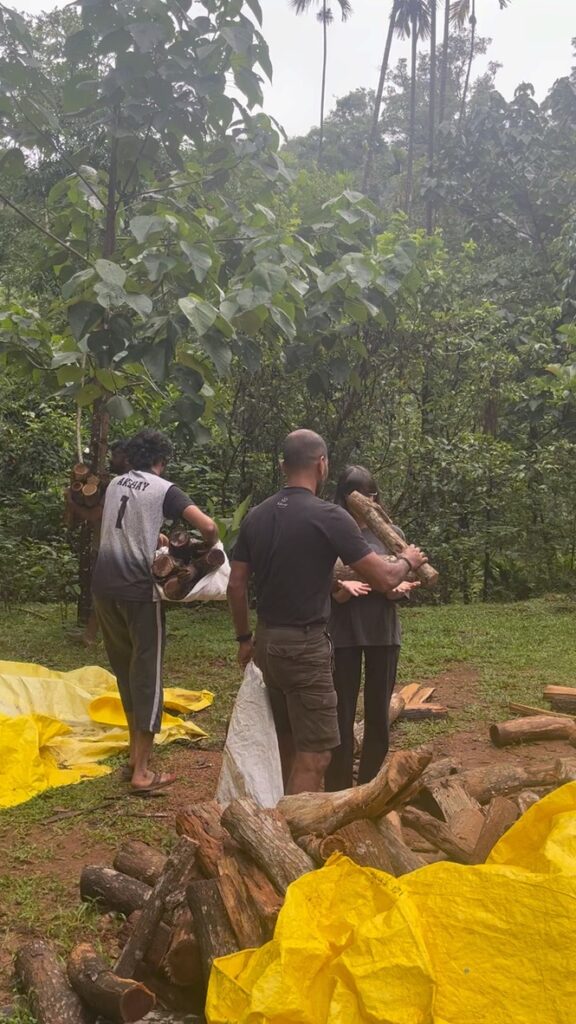
It was heartening to see Prashanth, guiding the interns to carry the heavy fire wood, collected over summers, to be stored in the shed for the upcoming monsoons.
Behind the Scenes
Prashanth not just manages the Kalinga Mane property impeccably, but also carries out some incredible rescues work regularly. He hails from Agumbe and knows the place and its pulse by the back of his hand.
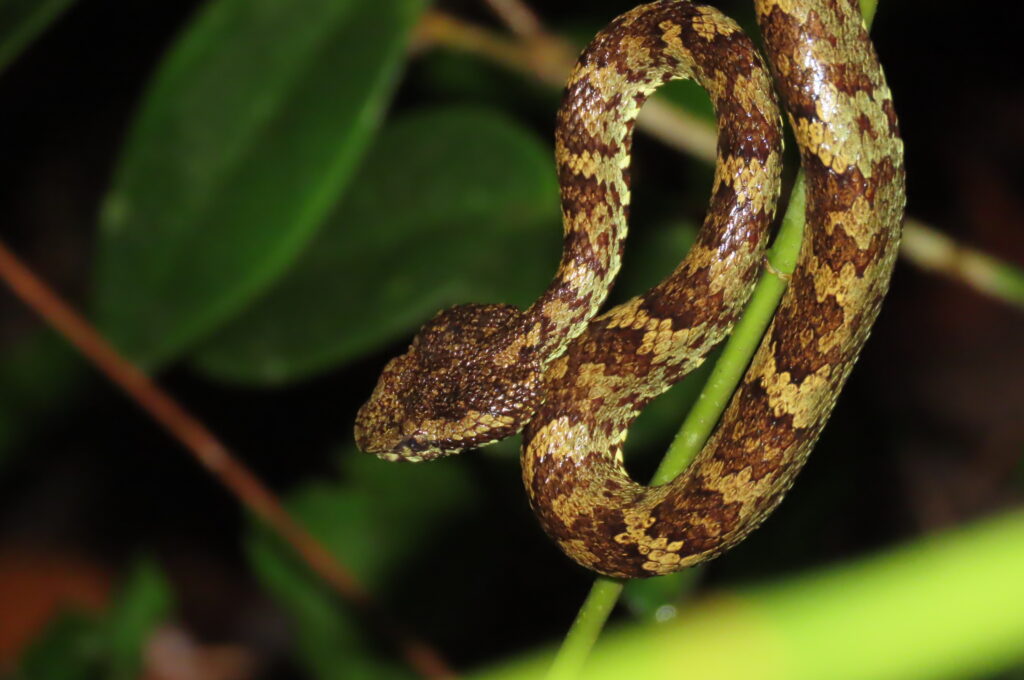
KCRE under the leadership of Dr. Gowrishankar is also undertaking the one of the first telemetry project’s to tag Malabar Pit Vipers in India. This assists in understanding their behaviour and patterns better.
One afternoon, Priyanka showed us the different Malabar Pit vipers so we could understand their features better. They had been kept for the telemetry project that KCRE is undertaking to study and understand their behavioural patterns, only to be released into the wild eventually.

A Historical Milestone at KCRE
More recently, in a milestone that will go down into the annuls of history, the King Cobra of Western Ghats has a local name after 185 years courtesy KCRE. King Cobras have been split into four species, and one of them in Western Ghats now has a Kannada name, thanks to Dr. Gowri Shankar and his team of researchers.
It has been named Ophiophagus kaalinga by Dr Gowri Shankar, to honour the people of Karantaka. Kalinga is the Kannada word for King cobra.
The Road Less Travelled
We took the road less travelled, figuratively speaking and explored the Agumbe rainforests and undertook the following three trails:
The Stream trail, Plantation trail, Dense rain forests and the Peak trail . There is a Leech trail too, that Aarshia and I skipped, for obvious reasons, and one that you will discover as you read on.
The Dense Rainforest Walk
This walk unveiled the descriptions I had read and seen in the films on the Amazon rainforests, bringing me inches closer to that dream.
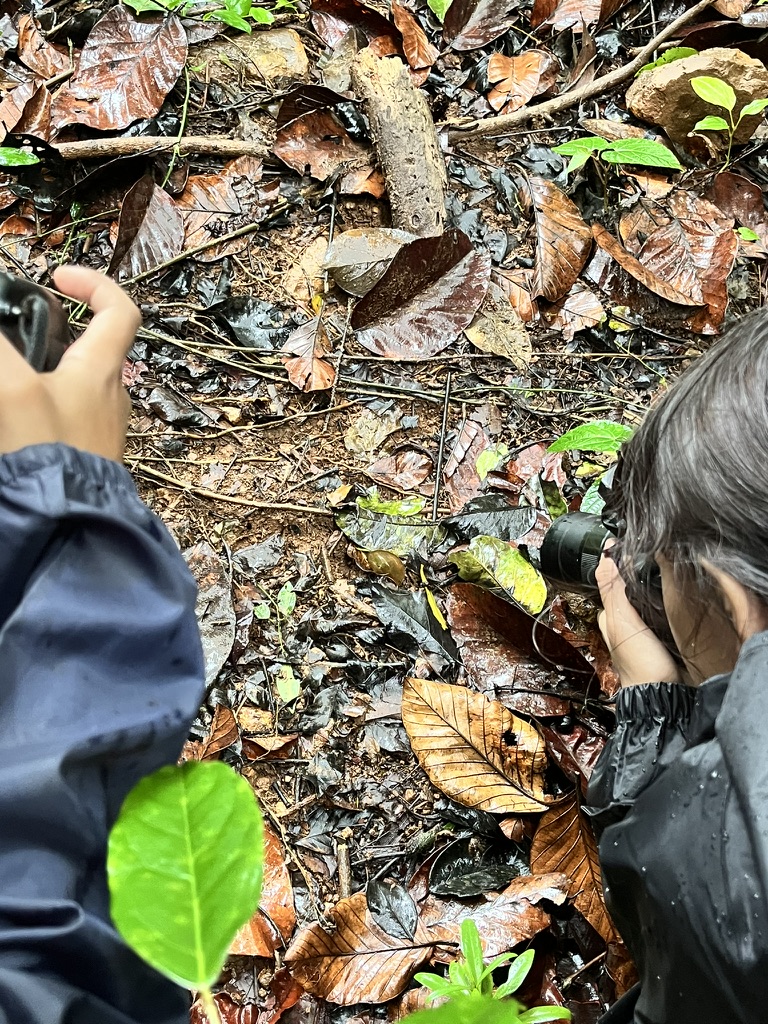
This was Day 2 of our stay at Kalinga Mane, and we trudged into the annuls of the rocky, dense, dark hills scouting for herpetofauna and stumbling upon gorgeous mycelium networks also in the process.
It continued to pour copiously even during this morning walk, which gave us the illusion of a dusk walk. We treaded carefully through the wet, moss laden, slippery tracks, hoping not to disrupt the peace of any species.
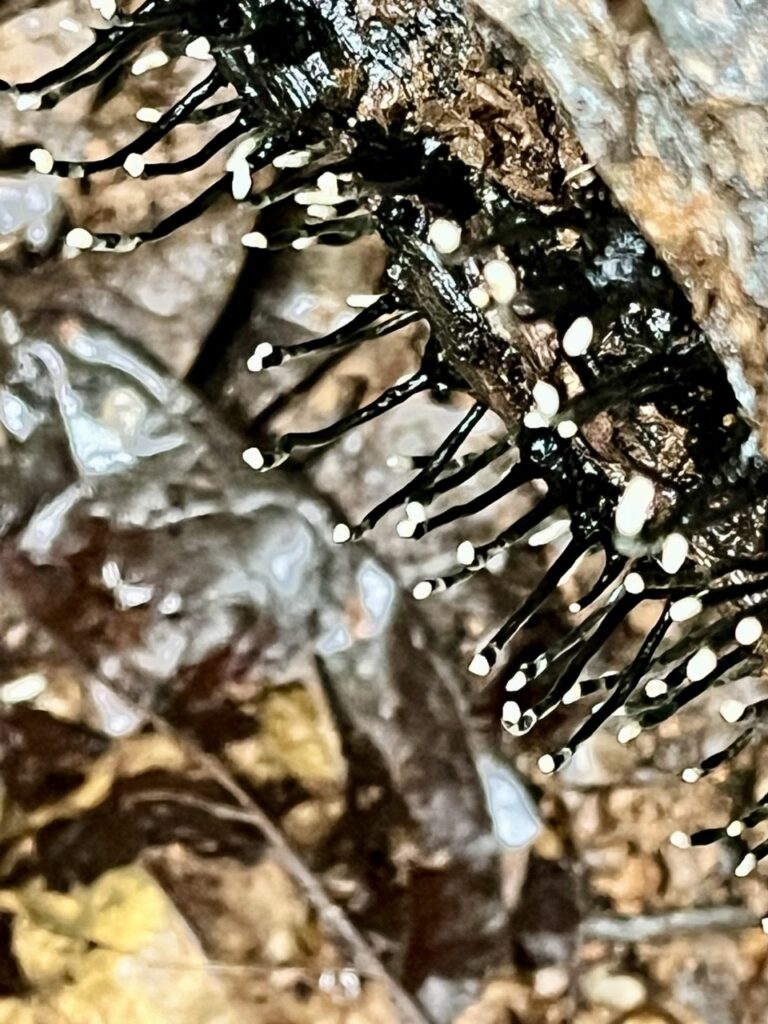
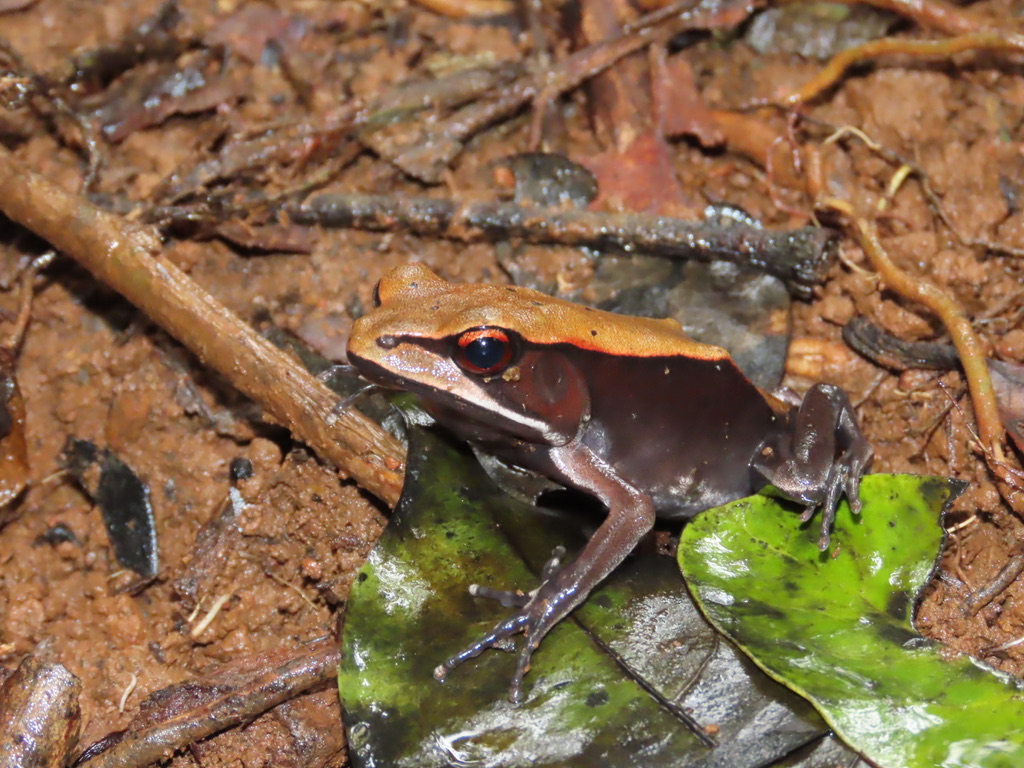
We saw quite a few species of frogs including bicoloured frogs (Clinotarsus curtipes). The bi-coloured frog brought back Coorg memories, from 10 years ago, and our trek to Nishani betta where I’d seen one for the first time.
We did not see any snakes this time, but a bunch of leeches greeted me as we walked out through the Jeep trail. Remember, in my last post I told you how they have a special predilection towards me, for reasons unbeknownst to me.
Akshay who had once again accompanied us, pointed to the mystery location he had promised at the start of our walk, “That’s where you should keep your eyes peeled for bioluminescent fungi, on a night walk.”
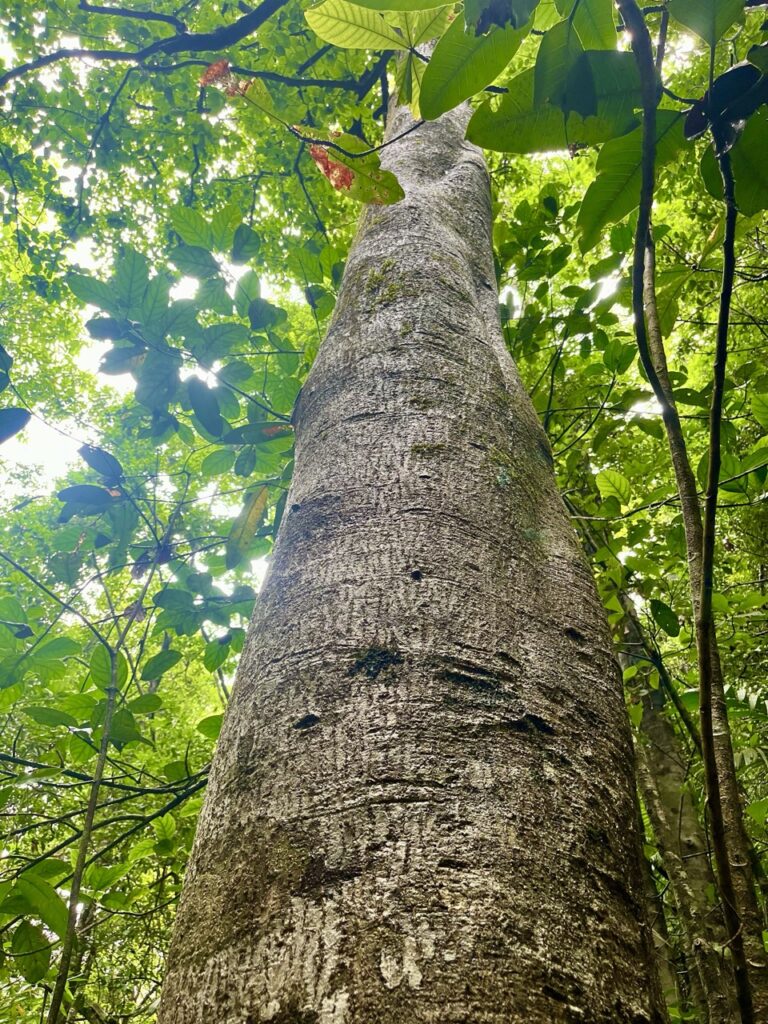
Plantation Walk
This walk is around the property, Kalinga Mane and it is awe-inspiring to witness the diverse species that will show up. During our 8-day stay in the depths of the Agumbe rainforests, we went for this picturesque walk on quite a few occasions, both at night and in the day.
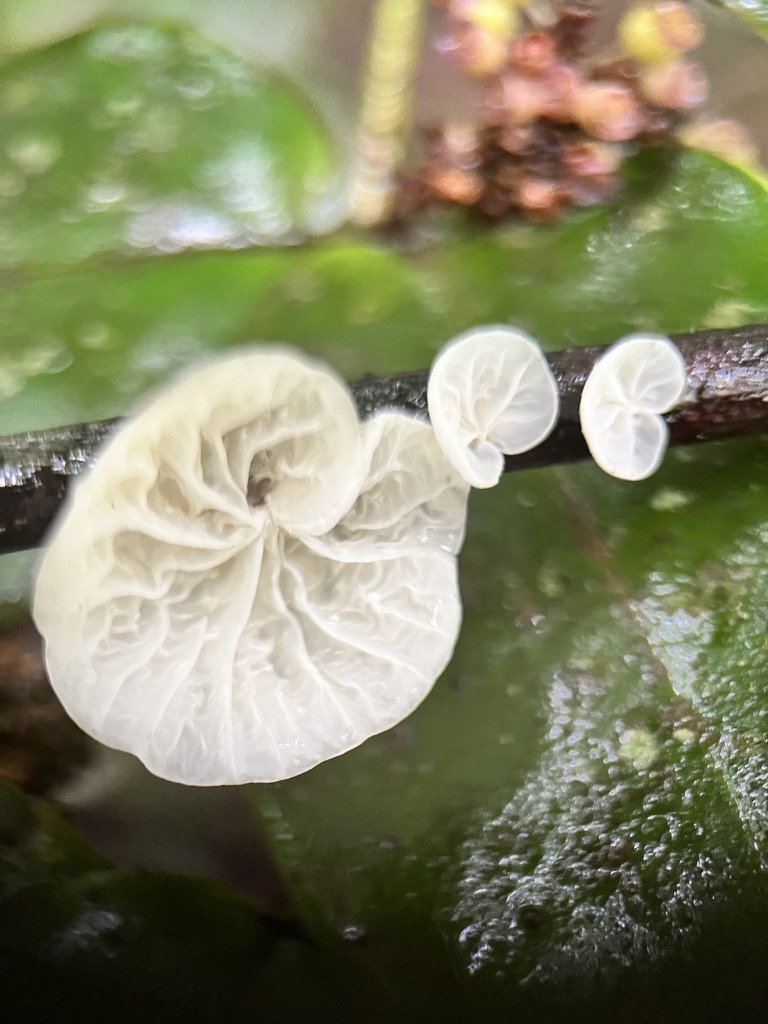
I was lucky to have spotted a massive Tranvancore Wolf snake (Lycodon travancoricus) slithering into the crevices of a rather large rock, on our first night walk in the plantation. Here’s the video from my phone camera.
During our day walks we were greeted by different species of spiders, the stunning Roux’s lizard, plenty of dragon and damsel flys, jewel beetles, spiders, bees, wasps, butterflies etc. around the pond and the plantation.
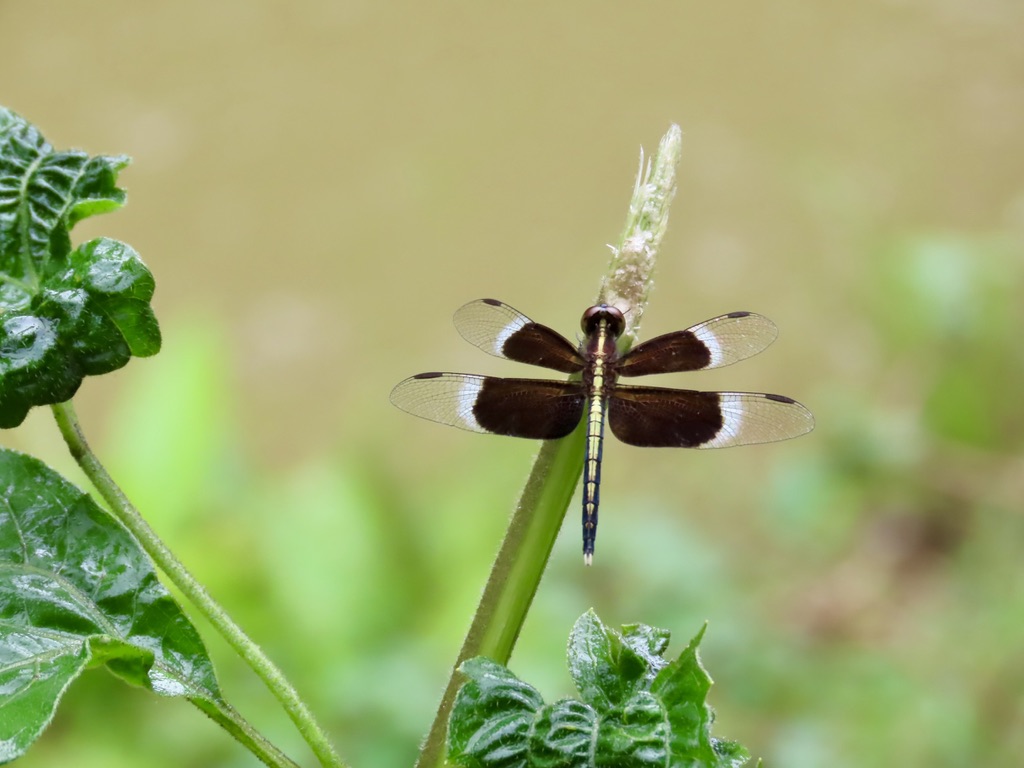
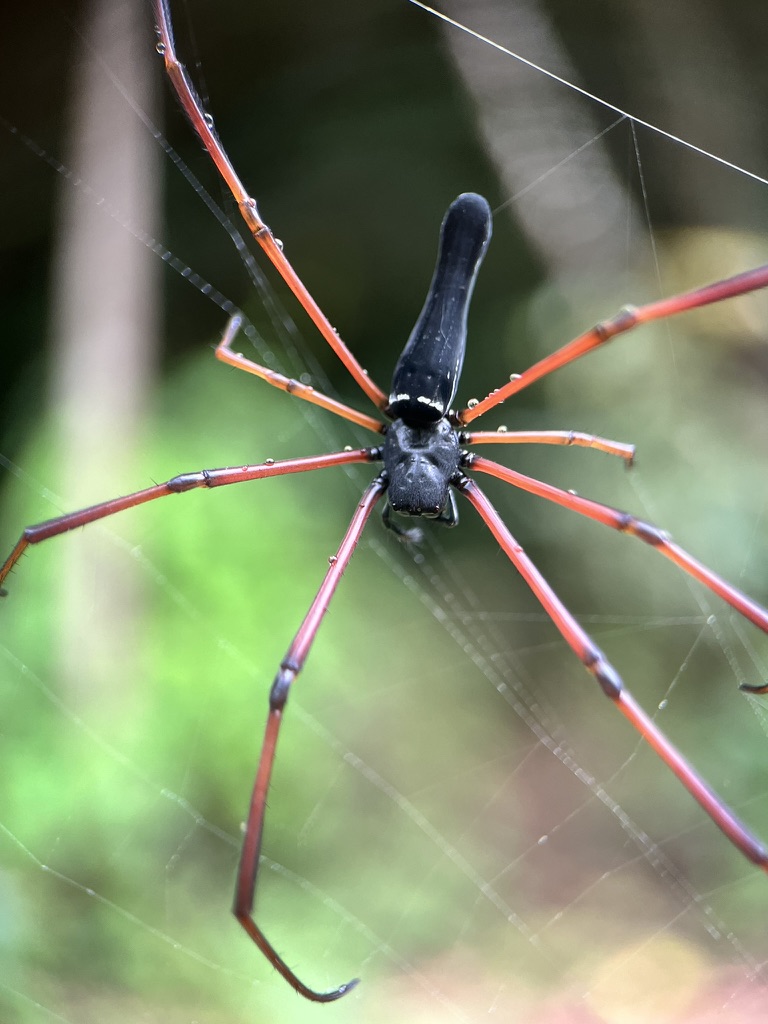
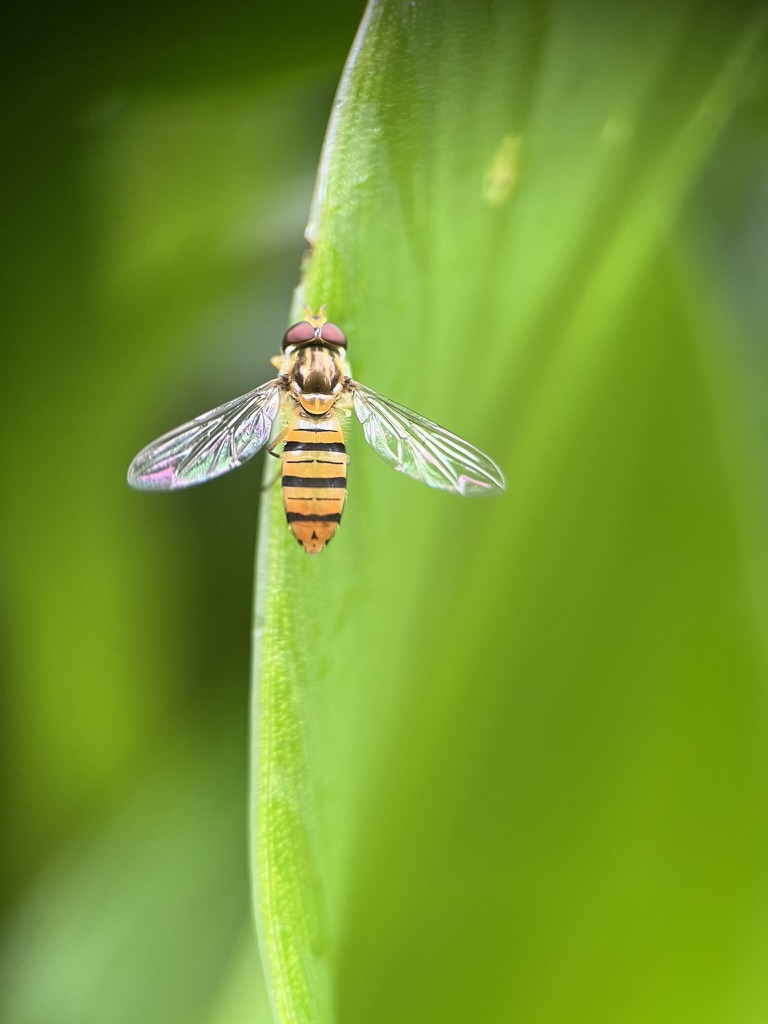
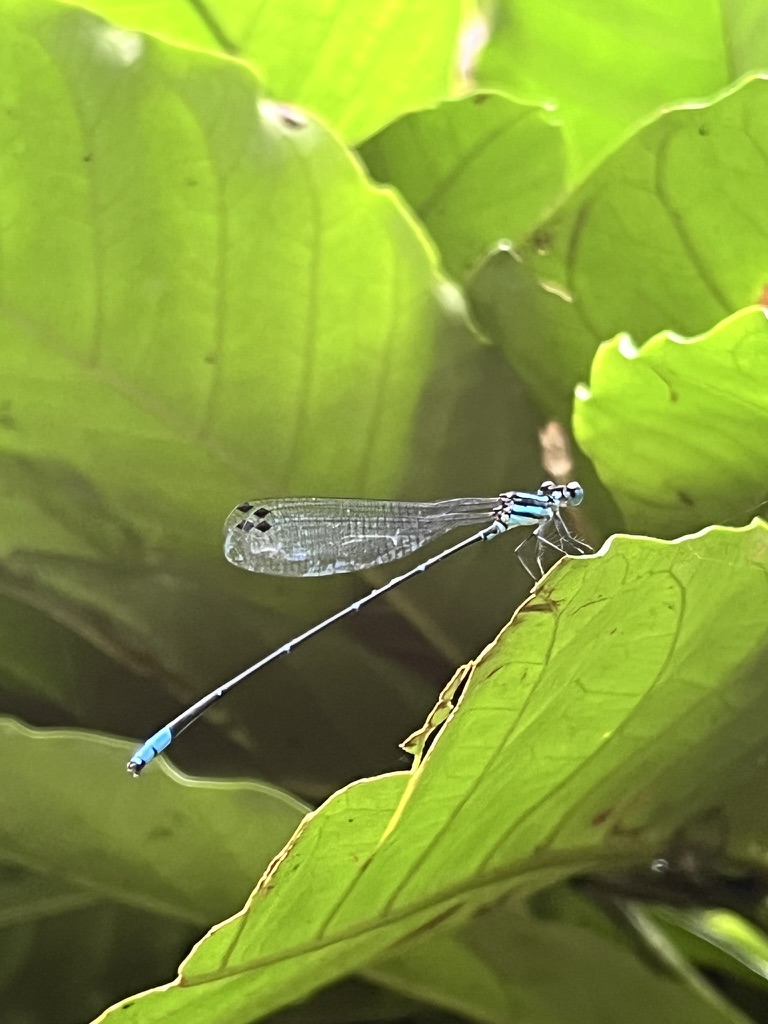
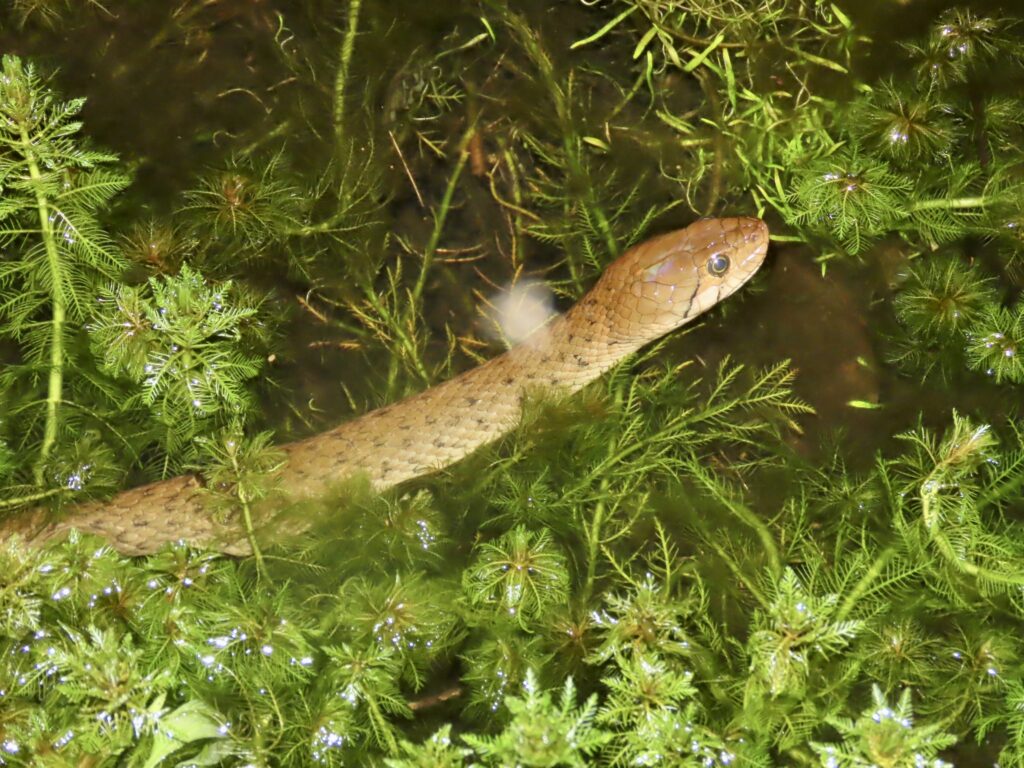
On day two, we spotted a checkered keelback that was a resident of the little pond by the dining area, created by bunch of interns. The Keelback had quite a spread for a feast, as the little pond was teaming with plenty of Indian golden-back frogs and a solo skittering frog. The latter I bet was skittery with the nocturnal party, at play that evening. Not sure whether s/he made it alive, or not though.
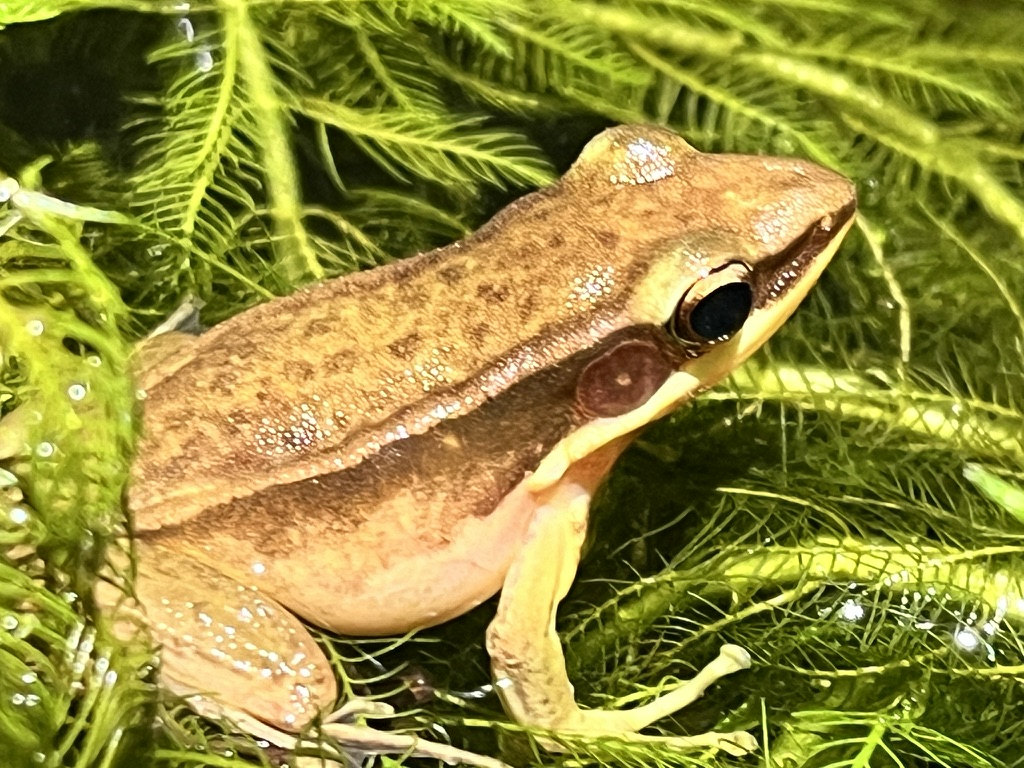
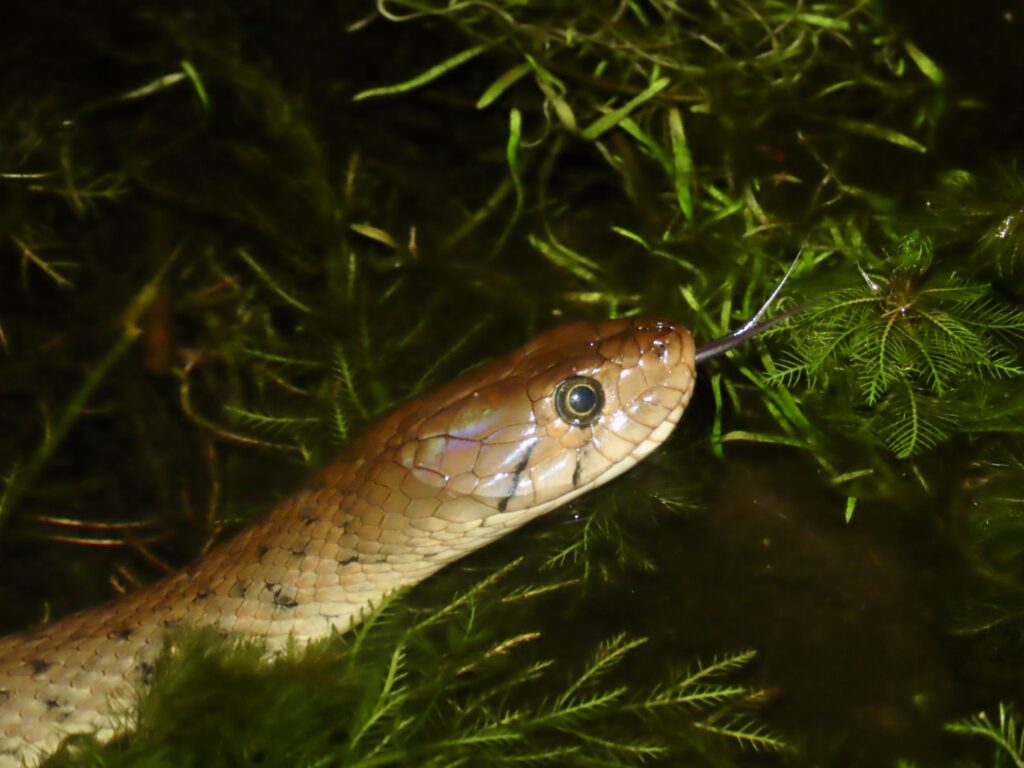
It’s Just a Leech: Save that Screech
Leeches had a special penchant for me, and on several occasions noticed them latched on. Leech socks, or otherwise. Here’s one such occasion where two leeches were nicely camouflaged behind my watch, sucking away my precious blood. I still bear this battleground scar! 🙂
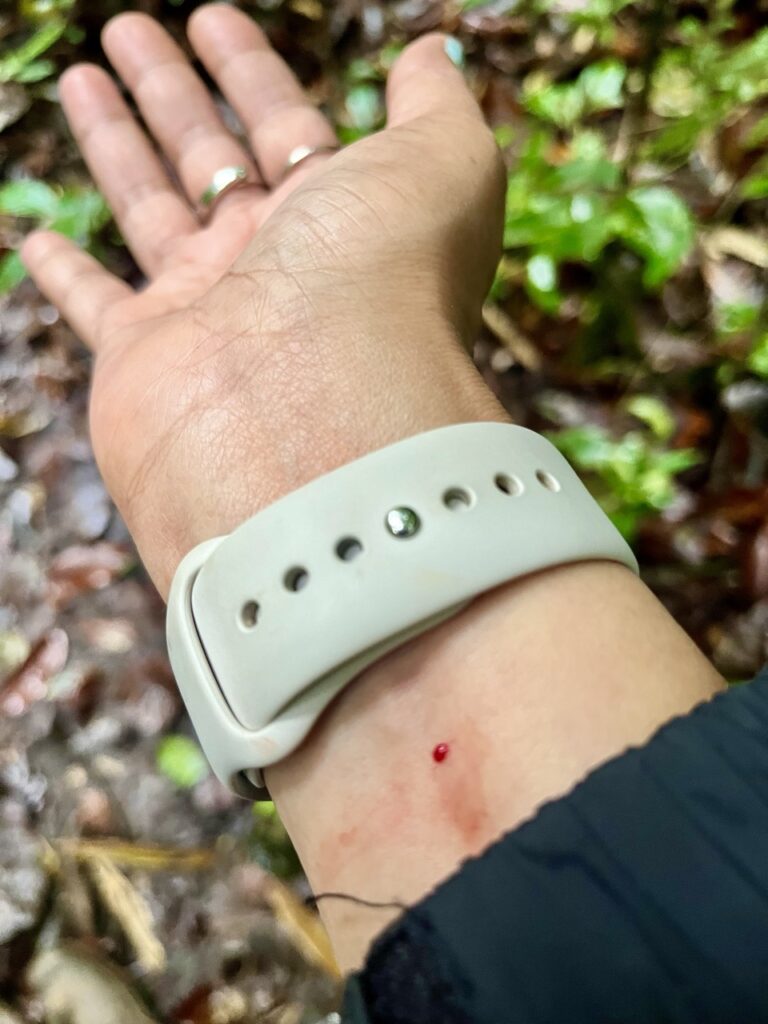
On another occasion I was walking around exploring the property, rather smug after the Dense forest trail and Jeep trail; without having having attracted a single leech. I refrain from using the word attacked 😉
I felt some slimy and sticky stuff tickling my lower back. On running my finger, I realised there were at least 6 leeches merrily hoisted on my back, feasting my blood drop by drop.
Why did that happen, you may wonder? Well, I had pulled my T-shirt out of the trousers after I returned from our trail. Never do that if you are walking around the leech prone areas, as that gives them an open invite to attack your body parts!!
Pro Tip: T-shirts, shirts always tucked in. A stitch in time saves nine!
How Leeches Benefit us
We were told by the KCRE team, “Leeches are a sign of a fertile soil.”
Over the years, we have seen them slowly disappear from our landscapes, due to aggressive use of pesticides and land degradation. Possibly even due to the practise of sprinkling salt over them that many of us are aware of and may have done in the past.
In ancient Ayurvedic practises leeches were used to clean toxic blood, and in some places in India they still continue to do so. Leech facial anyone? Yes, that’s also a thing.
Ancient Egyptian, Indian, Greek and Arab physicians have used leeches extensively for a wide range of illnesses. Recently, extensive researches on leech saliva unveiled the presence of a variety of bioactive peptides and proteins.
Consequently, leech therapy have made a comeback in the recent years as a new remedy for many chronic and life-threatening abnormalities, such as cardiovascular problems, cancer, metastasis, and many infectious diseases as well.
Leeches are harmless. The only way to take them off when they latch on, is to pull them off, roll them (so they get the heat to survive) and put them back into their habitat. Trust me that doesn’t come easy. But someone rightly said, “Practise maketh a man perfect.” I have to admit, in 7 days I just managed to get them off me, the rolling part wasn’t mastered at all. I can only pray they survived!
The Akki Batta Peak trek
On our penultimate day, we trekked up to the Akki Batta peak of the Agumbe rainforests. My hiking shoes had chosen to give away at this opportune moment and I decided to trek in boots! I also used them as a defence against the leeches.
Bad choices always teach us something. I developed Plantar fascitis in my left foot. Never again. After all “a wo-man is known by her shoes.”
The Akki batta peak was a fair climb and an incredibly picturesque one. We saw quite a few frogs, some orchids and fungi. My strength training came handy, and I’m so glad for that; as I am usually not that great with uphill treks.
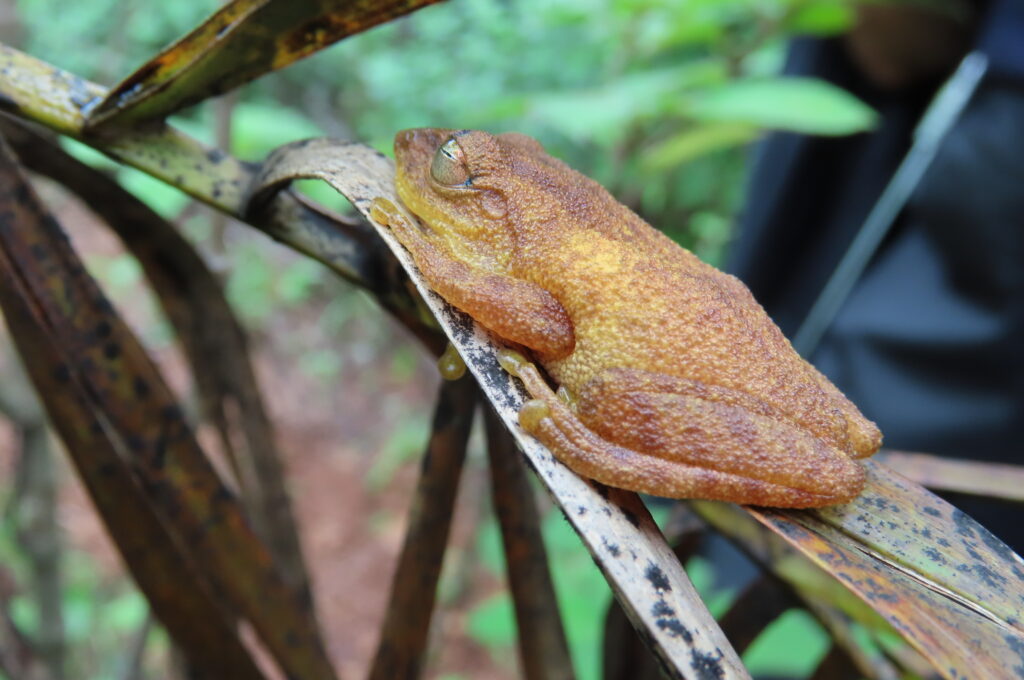
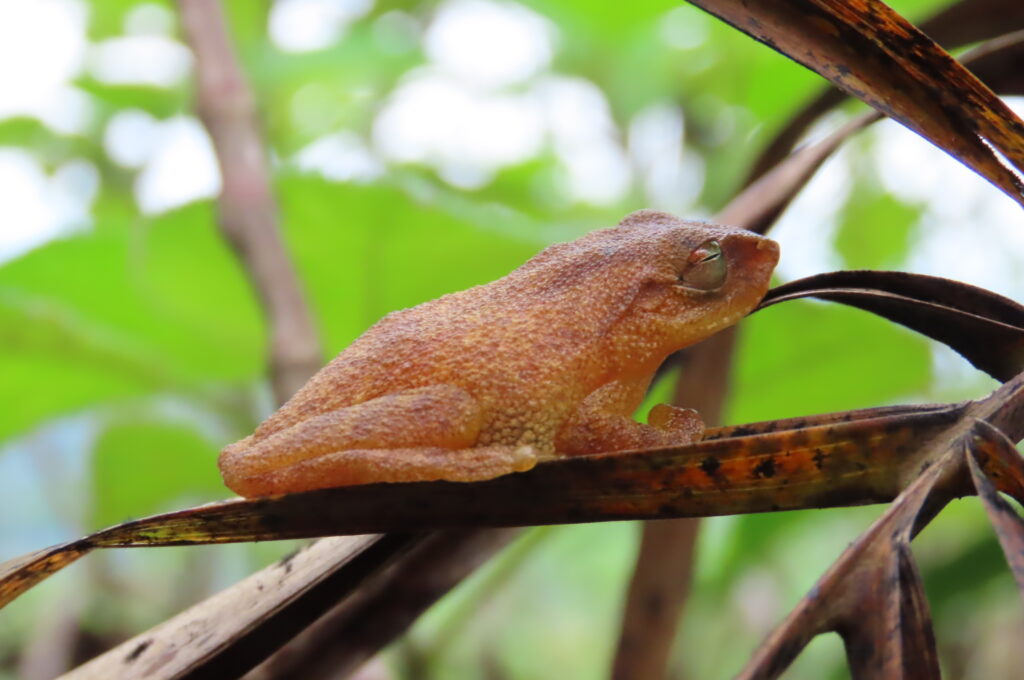
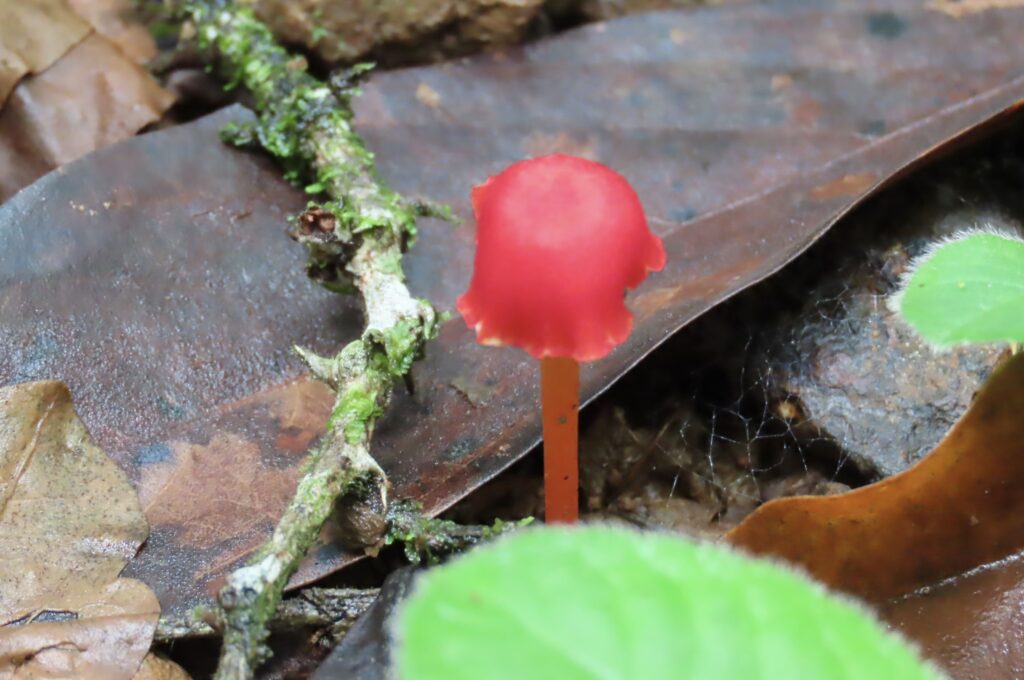
On Reaching the Summit
After about an hour and a half we reached the summit of the peak, only to be greeted by the most extraordinary view I’ve seen in a very long time. The serene hills and the valley echoed with the mellifluous sound of the breeze, literally toppling off a lizard before we could identify it.
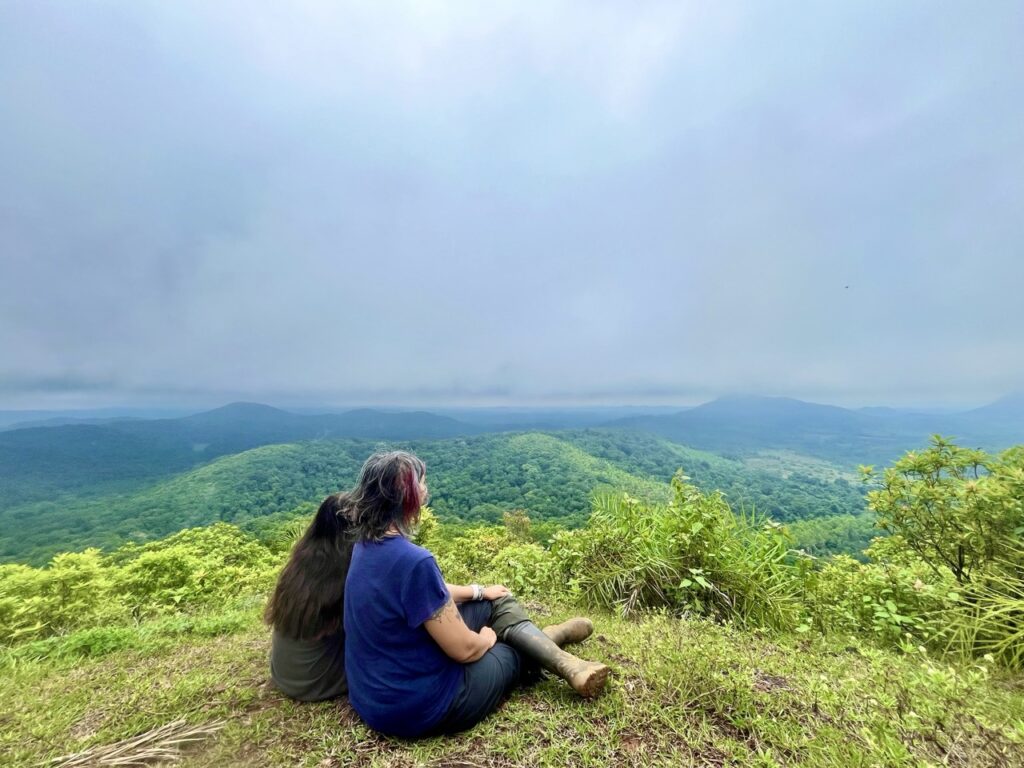
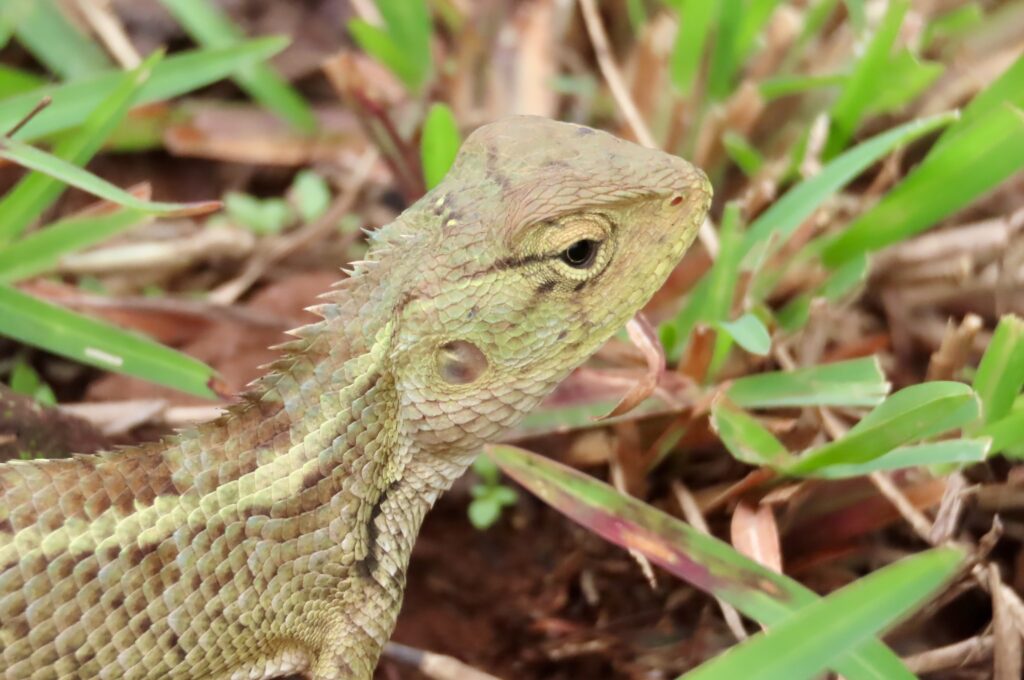

This was a breath-taking experience; yes, the climb and the view both! And we just merged into the lush embrace of nature.
Like I had said in my earlier post, KCRE isn’t for the faint-hearted. Nature gives us so much unconditionally, only if we know how to receive and respect it.
After a few photo-ops we made our climb downhill. By then we had built quite an appetite. Lunch that included sambhar rice and chicken curry, was a feast to our souls.
Jeep Trail:
Little did we know that the grand finale and curtain closure to our trip would be a treasure trove, that would unfurl new mysteries and species.
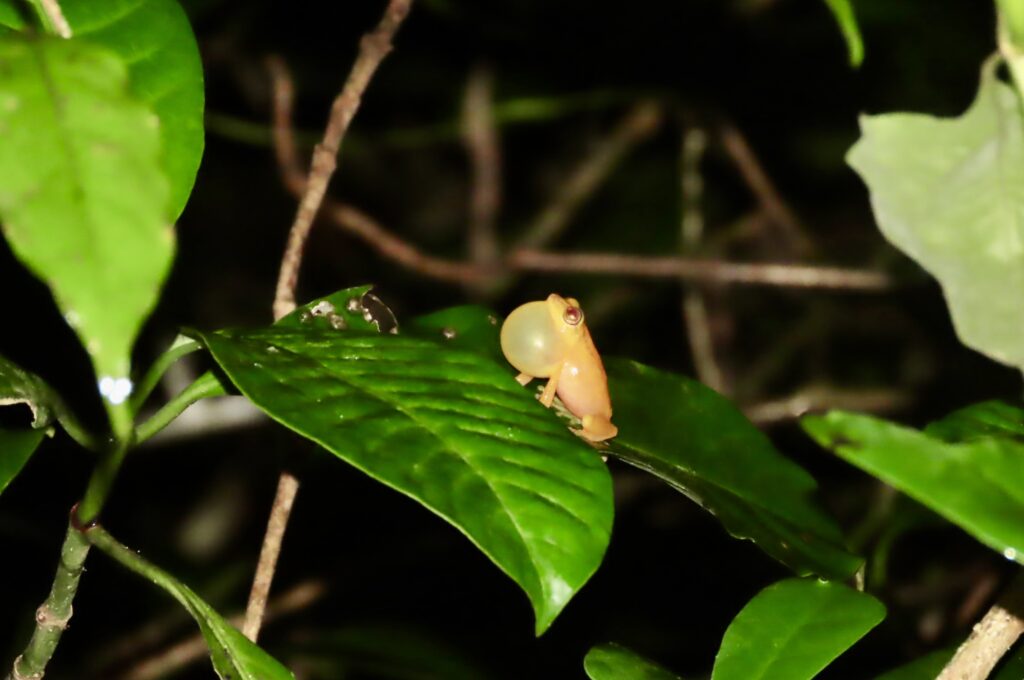
We not only got a chance to witness the bioluminescent fungi, but also the green morph of a Malabar Pit Viper. Aarshia spotted a cutesy little, juvenile wolf snake. The jeep trail was intensely active that night, as though bidding us a reverberating, orchestrated farewell.
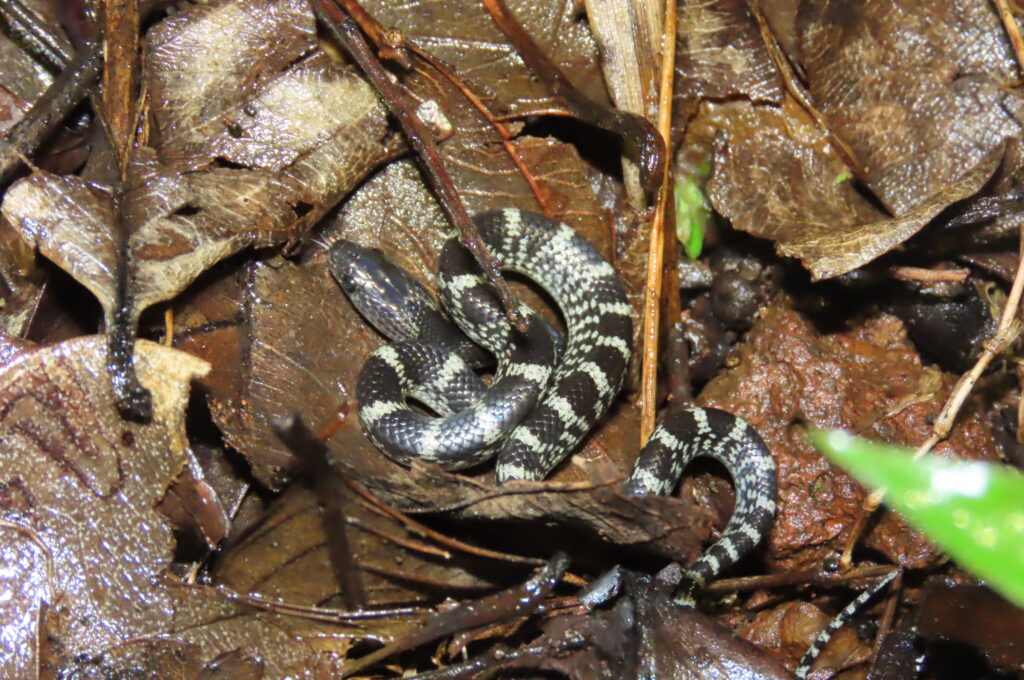
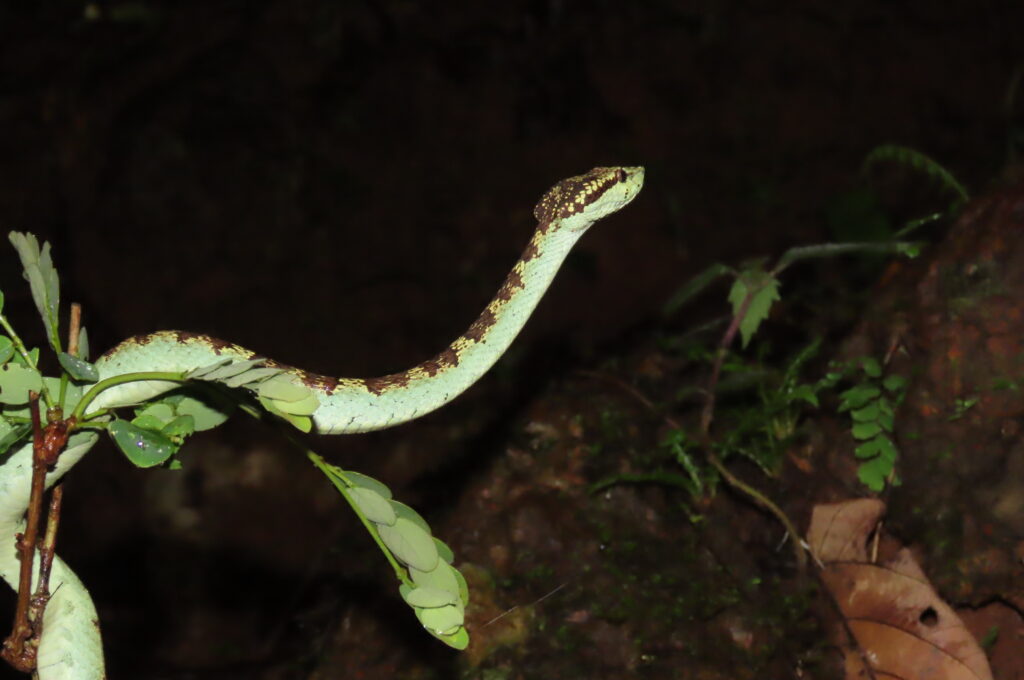
Here’s a video of this magnificent species from my iPhone camera.
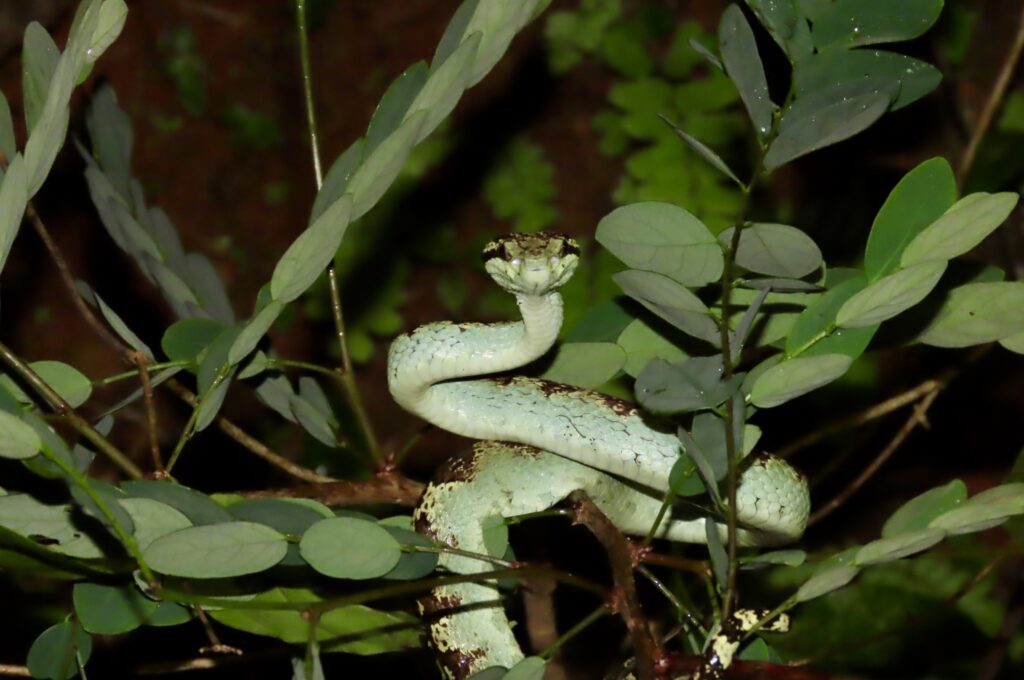
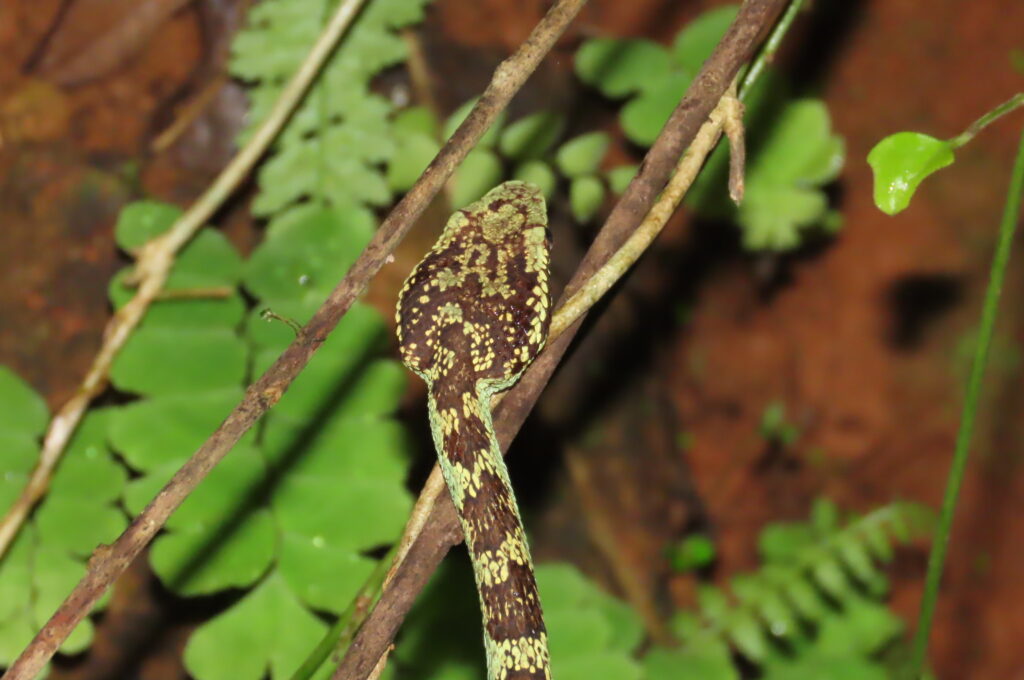
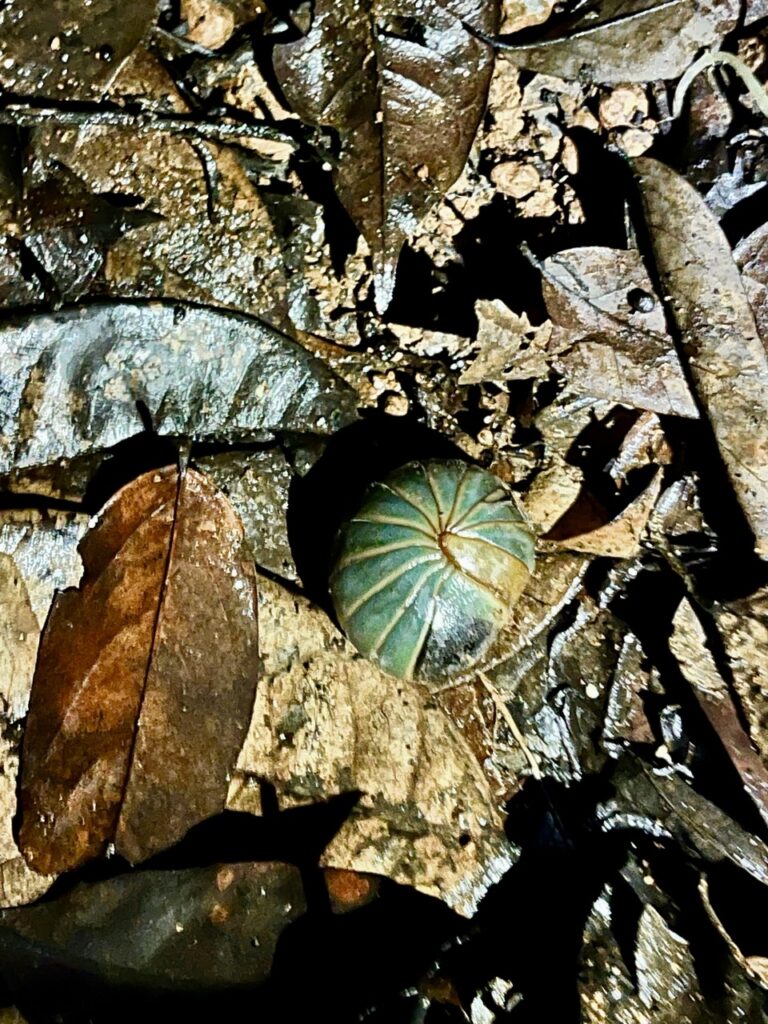
We returned back from our night herp, our hearts brimming in gratitude. Gratitude to these dense Agumbe rainforests and the team KCRE for the lessons galore. It was our final night in our cosy cottage at Kalinga Mane. Aarshia looked at me and said, “I wish we had stayed longer.” I wished so too. Yet, there will be a next time I know.
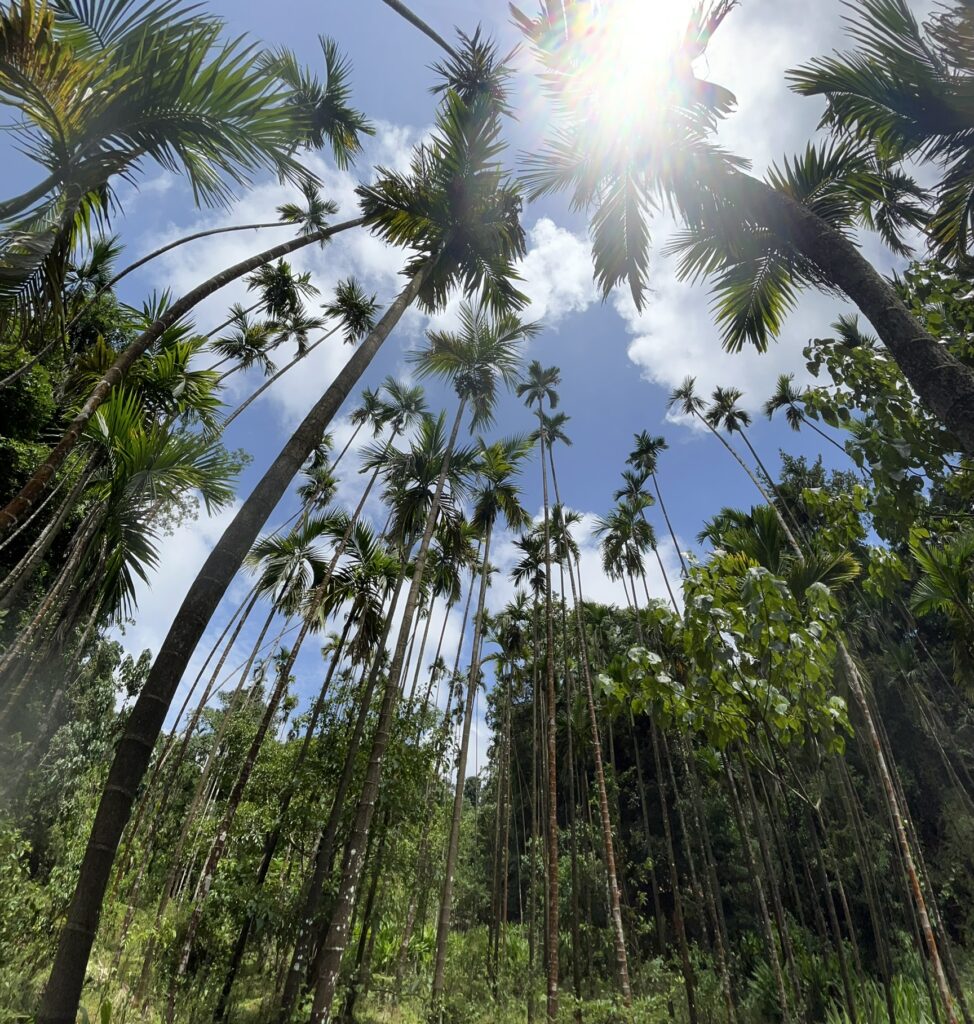
So long, Farewell: Adieu Agumbe
The next morning the sun finally rose from it’s deep, extended slumber of over a fortnight. It had specially arrived to give us a sunny send off, so I chose to believe. It seemed to be wrapping us a big, warm, cosy farewell hug.
It was nice to see Dr. Gowri Shankar back again that morning, for a workshop exclusively for women teaching them the ropes of herping.
After breakfast we had about an hour, before we drove out to Manglore to catch our flight. Aarshia and I walked around the plantation. We were in our own ways bidding a goodbye to the landscape that had woken up to the golden sun beams bouncing around the tree tops; soaking the landscape in all its glory.
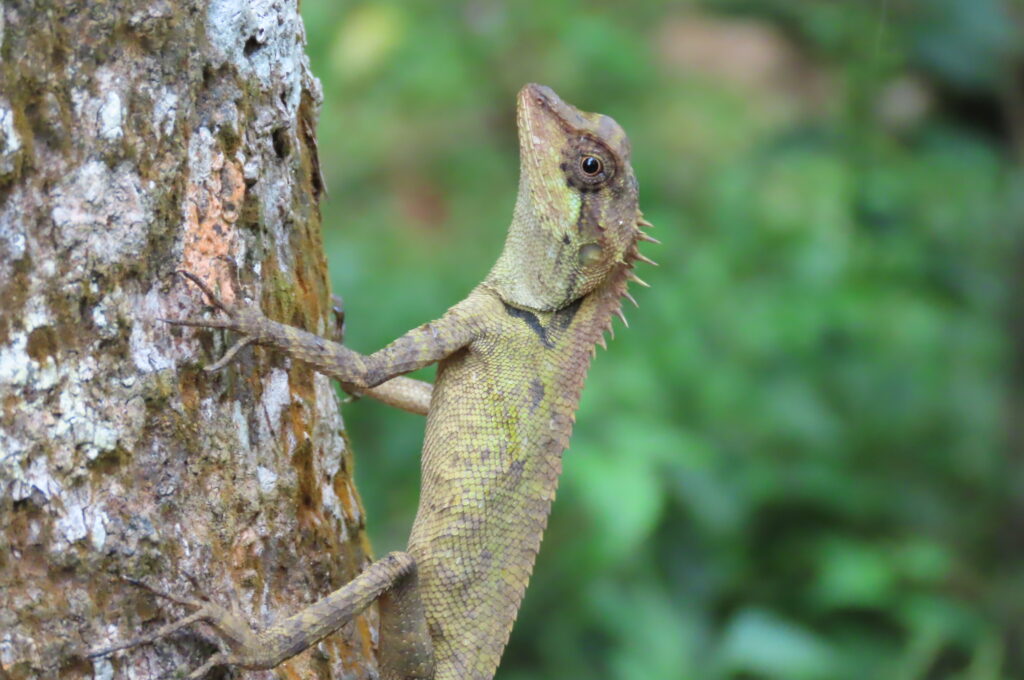
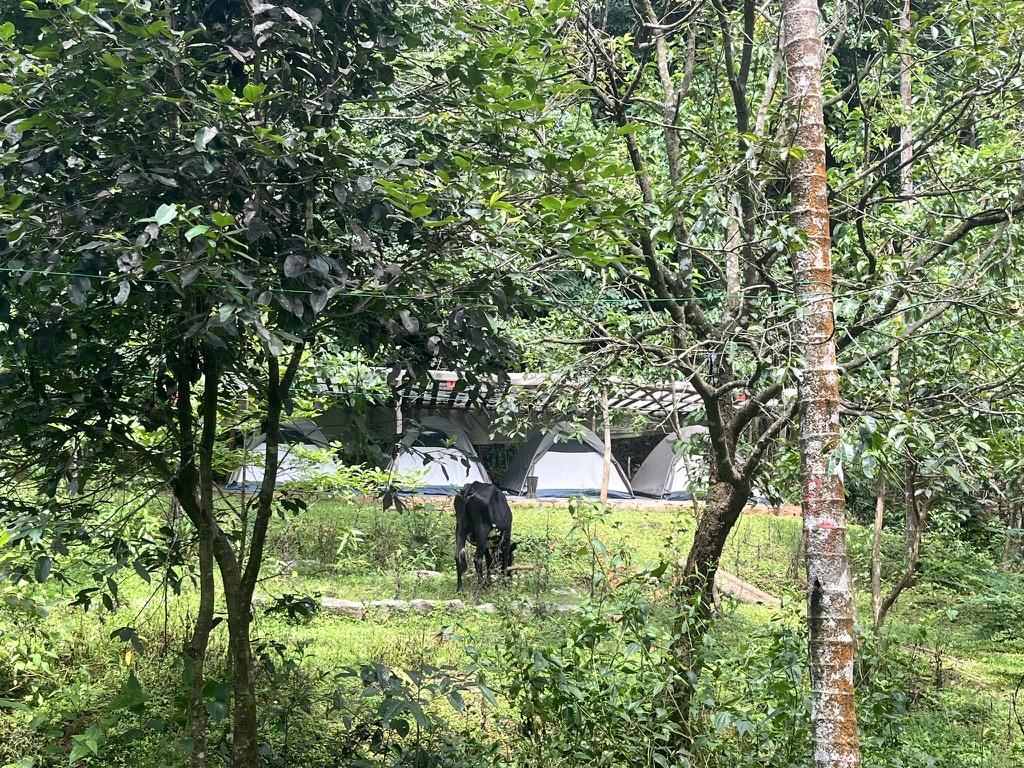
A New Spectacle to Behold
On a patch of grass I experienced the captivating phenomenon of a fungi sporing. At first glance I was clueless what was actually happening. Then the 16-year-old pointed out that it was indeed a mushroom that was spreading its spores far and wide.
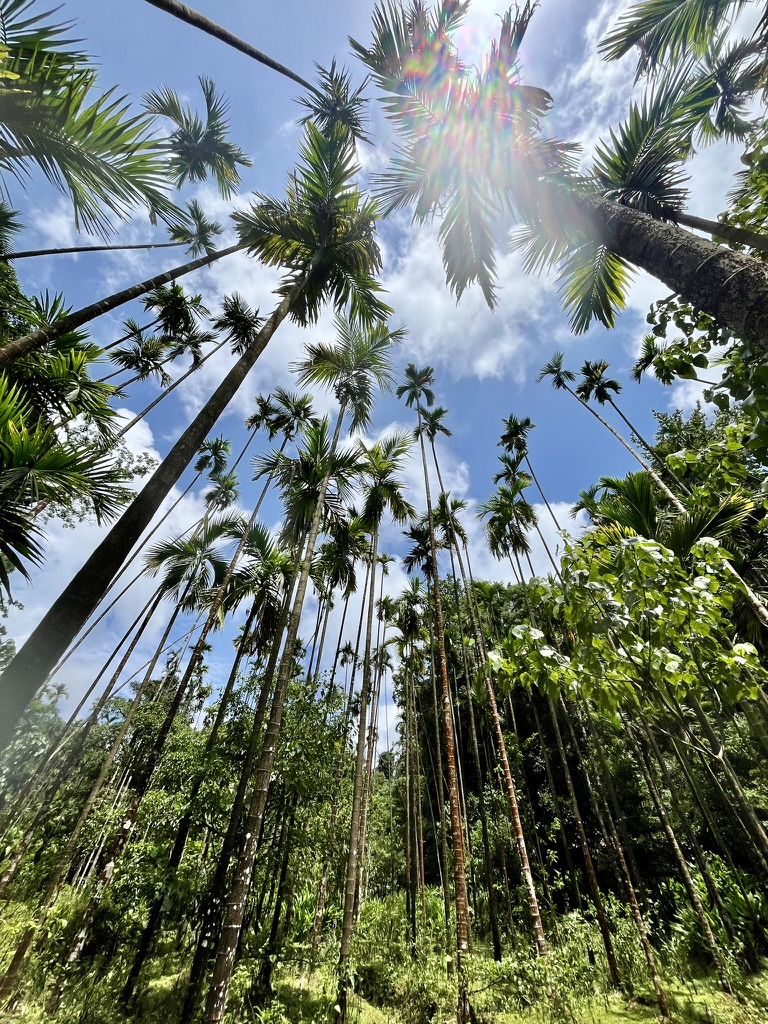
The sun gently rose above the towering Areca palms lending a rainbow hue, and kissing the gossamer wings of the flitting butterflies and damsel flys. This mystical spectacle somehow seemed to be foretelling us that it wouldn’t be long before we would be back.
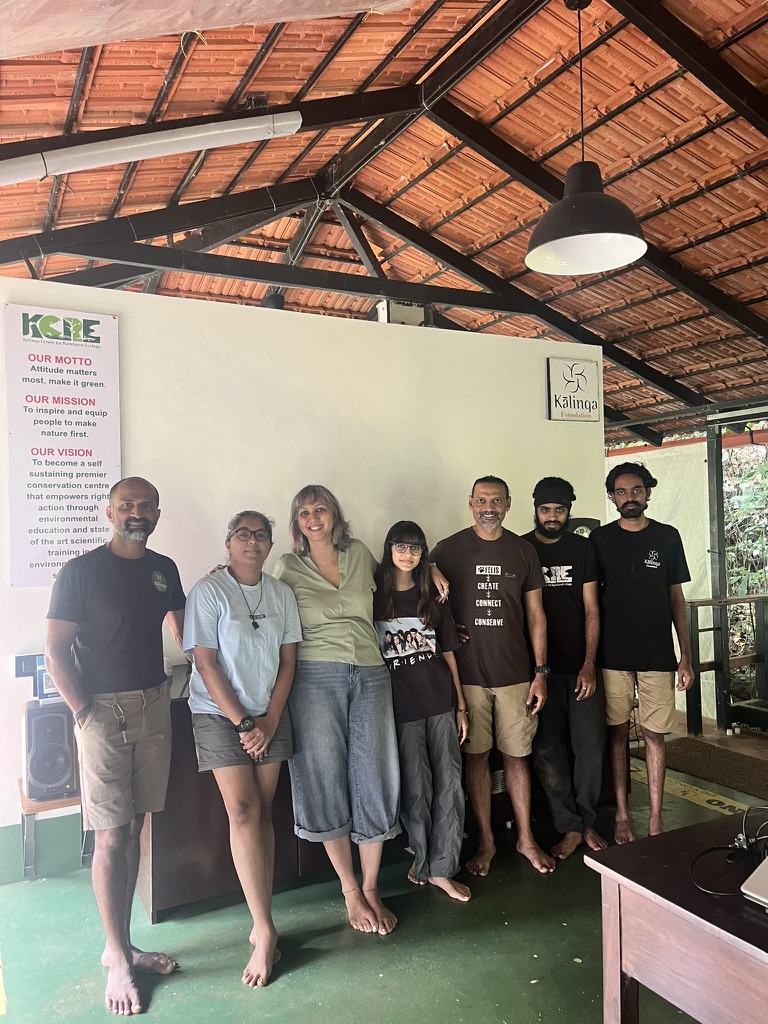
We gathered together with the KCRE team, along with Dr. Gowri Shankar to get a few photographs as our keepsake.
Adieu Agumbe!
We shall be back sooner than soonest, this time armed to learn more about the King – the Kalinga of the Agumbe rainforests – the King Cobra. We are sure that its hypnotic, magical charm, along with that of Agumbe’s, will beckon us back in no time.
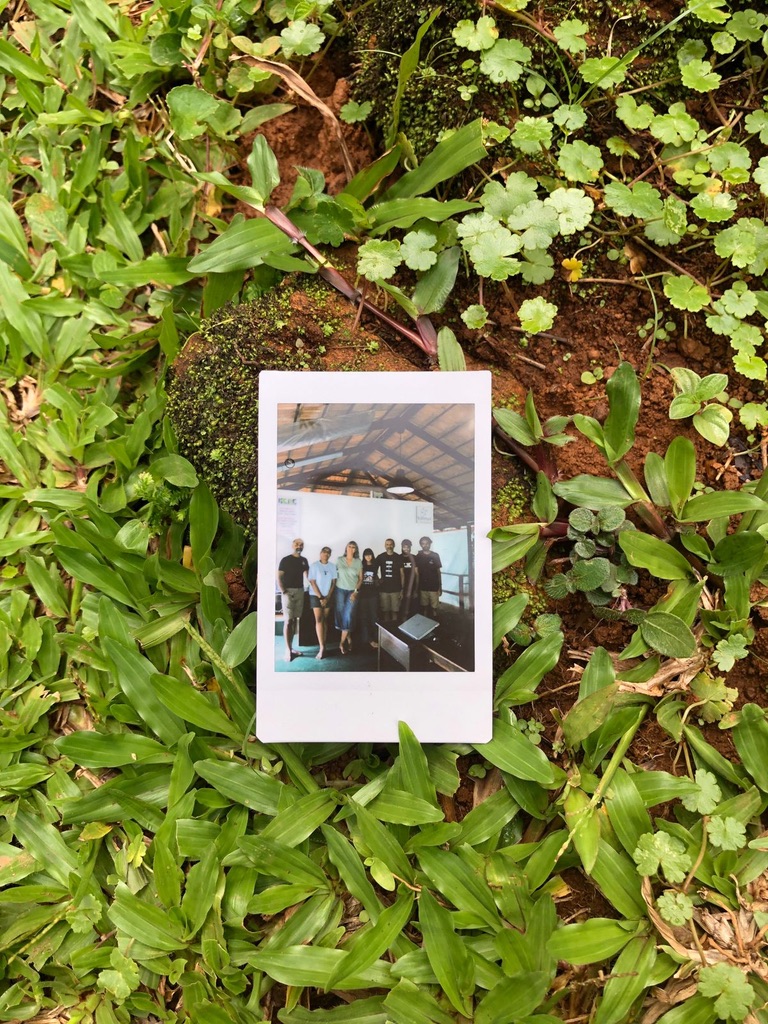
Would you ever like to intern in a forest?
What kind of forest would you choose?
Which moment of our adventure with KCRE at the Agumbe rainforests grabbed your attention the most?
Would so love to hear from you.
Love, light and laughter!
Natasha
Some rainforest music to create that vibe. We experienced something no less than this I must say.
